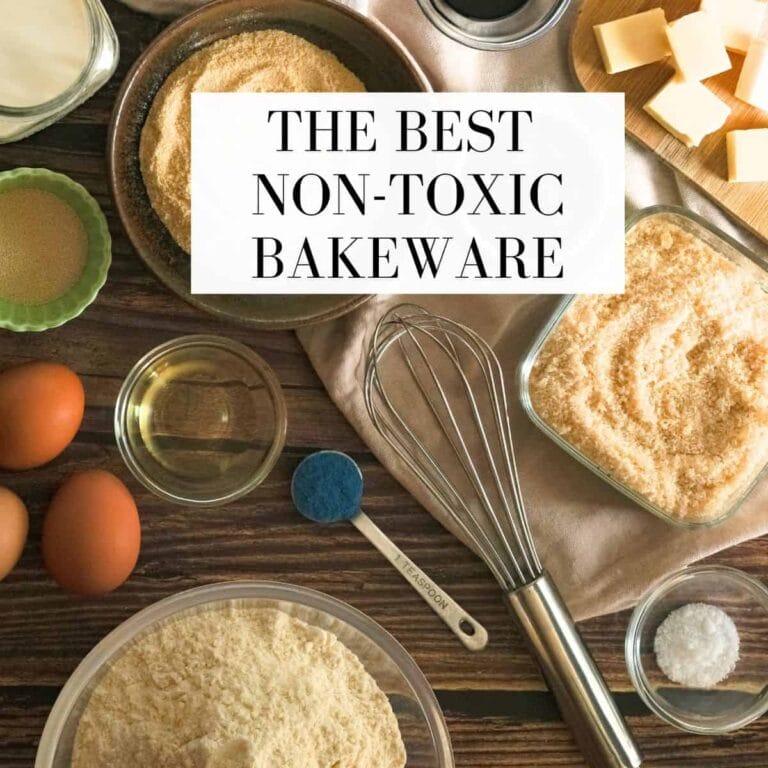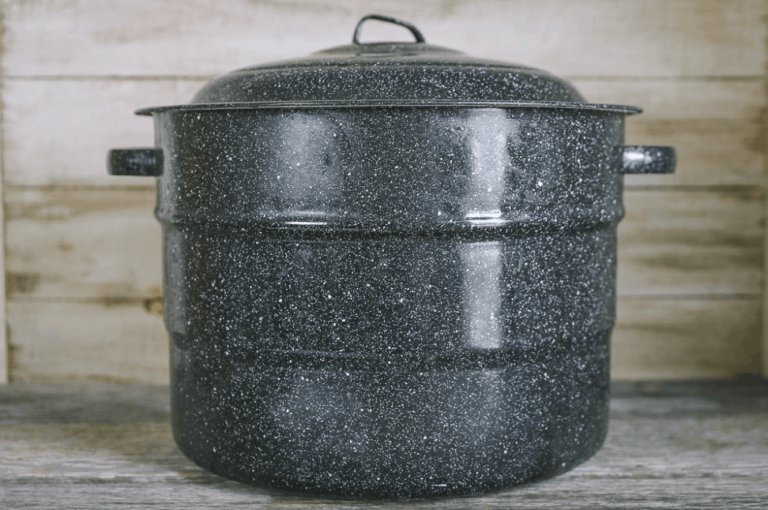
Are you wondering whether dark or light-colored pans are better for baking? Well, let’s dive into this delicious debate and find out! When it comes to baking, your choice of pan color can have a big impact on the end result. So, which one should you use? Let’s uncover the secrets behind dark and light-colored pans and discover which is the baking champion.
Dark-colored pans, like those made from dark metal or coated with a nonstick dark finish, absorb more heat and bake your goodies faster. They also tend to develop a deeper, richer browning on the bottom and sides, making them perfect for achieving that coveted crispy texture.
On the other hand, light-colored pans reflect more heat and distribute it more evenly, preventing over-browning and ensuring a more delicate bake.
Get ready to unlock the mysteries of baking with dark and light-colored pans. Join us on this scrumptious journey as we explore their differences, advantages, and the mouthwatering treats they excel at creating. Whether you’re a budding baker or an experienced dessert enthusiast, this guide will help you choose the ideal pan for your baking endeavors.
So, let’s get started on our quest to bake the most delectable treats by answering the burning question: are dark or light-colored pans better for baking?
Are Dark or Light-colored Pans Better for Baking?
When it comes to baking, the color of the pan can impact your results. Dark-colored pans absorb more heat, promoting quicker browning and crispy edges. Light-colored pans reflect heat, resulting in slower and more even baking.
The choice between dark and light-colored pans depends on the desired outcome of your recipe. For cakes and delicate pastries, light-colored pans are recommended to avoid over-browning.
If you want more caramelization and a darker crust, dark-colored pans are the way to go. Experiment and see which works best for your favorite recipes!
Benefits of Dark-colored Pans
Dark-colored pans, typically made of materials such as anodized aluminum or cast iron, absorb and retain heat more efficiently than light-colored pans. This means that your baked goods will cook faster and more evenly, resulting in a crispier crust or a golden brown color.
The darker surface also promotes better browning, which can enhance the flavor and appearance of certain baked goods, such as bread, cookies, and pastries.
Furthermore, dark-colored pans are great for recipes that require a longer baking time. The increased heat absorption helps prevent your baked goods from becoming soggy or undercooked in the middle. For dense and heavy recipes, like pound cake or fruitcake, dark pans provide the necessary heat distribution for even baking throughout.
Drawbacks of Dark-colored Pans
While dark-colored pans have their advantages, they also come with a few drawbacks. The enhanced heat absorption and browning properties can sometimes lead to overbaking, especially for delicate and light-colored cakes.
The darker surface can cause the bottom and edges of your baked goods to become darker or even burn if you’re not careful. To prevent this, it’s essential to adjust your baking time and temperature accordingly, and possibly use parchment paper or lighter-colored pans for more delicate recipes.
Another consideration with dark-colored pans is their potential to create a crisper crust than desired for certain baked goods. If you prefer softer, more tender crusts on your cakes or pastries, a light-colored pan might be a better choice.
The darker pan’s ability to promote browning and crisping may not be suitable for every recipe or personal preference.
Advantages of Light-colored Pans
Light-colored pans, usually made of materials like aluminum or stainless steel, reflect heat rather than absorbing it. This can result in a more gentle and even baking process, particularly for delicate recipes like sponge cakes or muffins.
The lighter surface helps prevent excessive browning or darkening of the crust, giving you a more consistent and desirable appearance.
Additionally, light-colored pans offer flexibility in terms of adjusting baking time and temperature. Since they do not retain as much heat as dark-colored pans, you have more control over the baking process.
This can be particularly beneficial if you are trying to achieve a specific texture or doneness level for your baked goods.
Drawbacks of Light-colored Pans
Despite their advantages, light-colored pans also have their limitations. Their heat reflection properties may result in longer baking times compared to dark-colored pans. This can be a disadvantage if you’re short on time or need to bake multiple batches.
Light-colored pans also tend to have a less intense browning capability, which may be undesirable for certain recipes that benefit from a richer color and flavor.
Furthermore, light-colored pans may not be as durable as their dark-colored counterparts and can be prone to discoloration or staining over time. While this doesn’t affect their functionality, it may impact their appearance and longevity.
Tips for Choosing the Right Pan
When deciding between dark or light-colored pans, consider the specific recipe and your desired outcome. Here are a few tips to help you choose the right pan:
- For recipes that require a longer baking time, such as bread or dense cakes, dark-colored pans are ideal.
- If you want a crispier crust or enhanced browning, dark-colored pans are your best bet.
- If you prefer a softer and more tender crust, especially for delicate cakes or pastries, opt for light-colored pans.
- Consider the color of your recipe. Light-colored pans are better for light-colored recipes, while dark-colored pans can enhance the appearance of darker recipes.
- Ultimately, it’s essential to experiment and find what works best for your specific recipes and personal preferences.
Additional Considerations When Baking
Aside from the pan color, there are other factors to consider when baking. These include oven temperature accuracy, proper measuring techniques, ingredient quality, and following recipe instructions. Paying attention to these factors can significantly impact the success of your baked goods regardless of the pan color you choose.
Storing and Maintaining Your Baking Pans
Proper storage and maintenance are crucial for extending the lifespan of your baking pans. Always ensure your pans are completely dry before storing them to prevent rust or corrosion. If your pans are non-stick, avoid using metal utensils that may scratch the coating.
Cleaning your pans with gentle dish soap and a soft sponge is usually sufficient, but always refer to the manufacturer’s instructions for specific care guidelines.
When it comes to deciding between dark or light-colored pans for baking, there is no one-size-fits-all answer. Both options offer distinct advantages and drawbacks that can influence the outcome of your baked goods.
Consider the specific recipe, desired appearance, and personal preferences when selecting your pans. Remember to make adjustments to baking time and temperature accordingly, and experiment to find the perfect combination for your baking needs.
Frequently Asked Questions
Are you wondering if dark or light-colored pans are better for baking? Here are some common questions answered to help you make the right choice for your baking needs.
1. Which type of pan is better for baking – dark or light-colored?
Both dark and light-colored pans have their advantages. Dark pans tend to absorb and retain heat more efficiently, resulting in quicker and more even browning of baked goods. This can be particularly beneficial for recipes that require a golden crust, like bread or pastries.
Light-colored pans, on the other hand, reflect more heat, resulting in a gentler and slower bake. This can be useful for delicate recipes that require a lighter or more uniform color, like delicate cookies or sponge cakes.
When choosing a pan, consider the type of recipe and the desired outcome. Dark pans are excellent for achieving a deep, even browning, while light-colored pans are better for gentle and uniform baking.
2. Does the color of the pan affect baking time?
Yes, the color of the pan can affect baking time. Dark-colored pans absorb and retain heat more efficiently, leading to faster and more intense baking. As a result, recipes may bake slightly faster in dark pans compared to light-colored ones. To compensate for this, it is advisable to reduce the oven temperature by 25°F when using dark pans to prevent over-browning or burning.
When using light-colored pans, it is crucial to stick to the recommended baking times in the recipe to ensure proper cooking.
Adjustments in baking time may be required when switching between different colored pans, so it’s always a good idea to keep an eye on the baking process and test for doneness using a toothpick or cake tester.
3. Do dark-colored pans affect the texture of baked goods?
Dark-colored pans can affect the texture of baked goods since they absorb more heat and promote quicker browning. This can result in a thicker and crisper crust, which is desired in certain recipes like artisan bread or pie crusts. However, for recipes that require a softer and lighter texture, light-colored pans might be a better choice.
Keep in mind that the pan is just one factor influencing the texture of baked goods. Other variables like ingredients, mixing technique, and oven temperature also play a significant role. Experimenting with different pans and adjusting other factors can help achieve the desired texture for your specific recipe.
4. Are there any recipes that specifically call for dark or light-colored pans?
Some recipes may specifically call for dark or light-colored pans depending on the desired outcome. For example, recipes that require a deeply browned crust, such as bread or certain types of pastries, often recommend using a dark pan.
On the other hand, recipes like delicate cookies or sponge cakes may suggest using a light-colored pan to achieve a lighter and more consistent color.
It’s essential to follow the recipe’s instructions regarding the type of pan to use to achieve the intended result.
However, if a recipe isn’t specified, you can consider the characteristics of each type of pan and decide based on the texture and color preferences of the particular baked goods you’re making.
5. Can I use both dark and light-colored pans for baking?
Absolutely! In fact, having a mix of dark and light-colored pans can be advantageous since it allows you to choose the best pan for each recipe. Dark pans are excellent for achieving deep browning, while light-colored pans are ideal for gentler and more consistent baking.
Having both types of pans in your kitchen enables you to experiment and adapt to various recipes and desired outcomes. It’s always a good idea to have a range of pans available to meet the specific needs of different baked goods and expand your baking possibilities.
So, what did we learn about dark and light-colored pans for baking? Well, dark pans absorb more heat and can make your baked goods browner, but they may also cook faster. Light-colored pans reflect more heat and can result in lighter-colored baked goods.
The best choice depends on what you want to bake and how you like your treats to turn out. Keep experimenting and find what works best for you!






